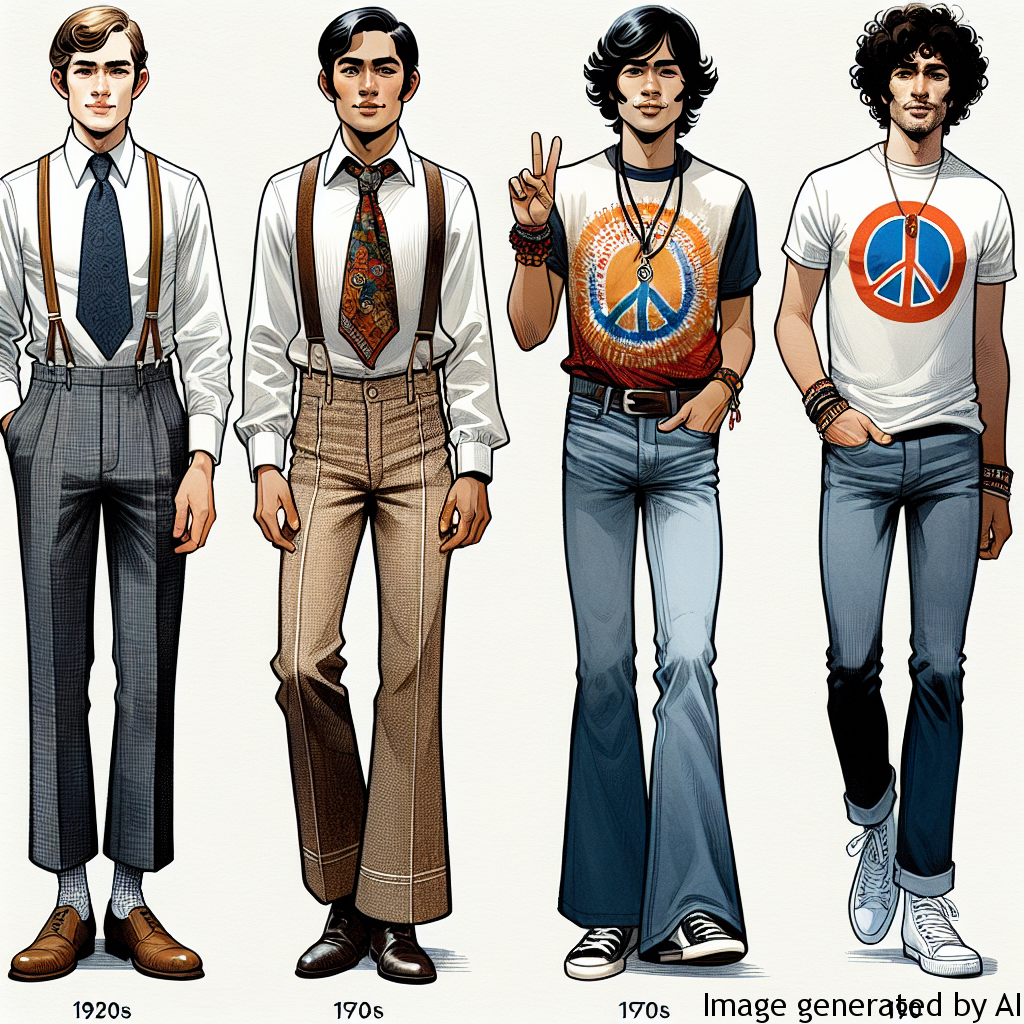Introduction
Generational differences are a crucial determinant of various societal aspects and one such domain is men’s fashion. With each generation, we see significant changes in the attitude towards clothing for men, and these shifts typically reflect in the contemporary culture and societal norms of these times. The dynamics of men’s fashion is significantly influenced by these generational gaps. The evolution in men’s garments over the years is not merely about changing aesthetics but is closely entwined with gender expectations and their subsequent effects on men’s mental health.
Description of Gender Expectations and Their Impact on Men’s Mental Health
Gender Expectations
Gender expectations manifest as fashion norms that men are socially inclined to follow. For instance, the traditional notion of masculinity that is associated with strength and rigidity reflected in their attire, with sober colors and structured designs. But, as the perception of masculinity evolves, the fashion sees more color and varied styles incorporated into men’s fashion. Such shifts can affect men’s mental wellbeing as they involve adaptive changes to fit into these new ‘norms’.
Impact on Men’s Mental Health
Conforming to changing fashion trends and gender expectations can exert tremendous pressure on men, leading to potential mental health issues. Increased anxiety, behavioral problems, and feelings of dissatisfaction and inadequacy could be by-products of failing to adhere to or keep up with evolving fashion trends. Thus, it is important to understand that gender roles can significantly affect men’s lives.
Examples of How Gender Roles Can Influence Men’s Lives
Gender roles put a lot of pressure on men to appear in a certain way. For instance, the prevailing societal positioning of men being ‘stylish but not overly concerned about their appearance’ can cause internal conflicts. Body image issues, previously considered a ‘female problem,’ are increasingly affecting men, too, as body ideals perpetuate in society.
There’s been a continuous shift in men’s fashion. The rugged, macho aesthetic of the ’80s switched to the sleek and minimalistic ethos of the ’90s. Today, with more fluid notions of gender, men’s dressing is seeing more diversity, with androgyny entering the mainstream fashion. But this continual evolution can lead to identity crises in individuals unable to cope with change.
Advice on Improving Mental Health, Considering Gender Roles
It essential to establish that individuality and personal comfort should precede societal expectations of appearance. Encouraging self-expression through fashion and promoting body positivity can reduce the pressures of conforming to societal fashion norms. Engaging in activities that encourage self-esteem, focusing on strengths and talents beside appearance and seeking professional help when feelings of inadequacy persist are further recommendations.
Conclusion
The impact of generational differences on men’s fashion is evident and undeniable, reflecting broader cultural and societal shifts. However, it is vital to remember self-worth is not dictated by adherence to fashion trends. While fashion does play a role in self-expression, it should not be at the cost of personal comfort or mental health. The crucial aspect should be to embrace change without losing one’s individuality in the process.

